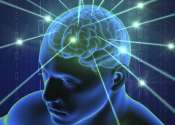Research reveals quantum entanglement among quarks
Collisions of high energy particles produce "jets" of quarks, anti-quarks, or gluons. Due to the phenomenon called confinement, scientists cannot directly detect quarks. Instead, the quarks from these collisions fragment ...









